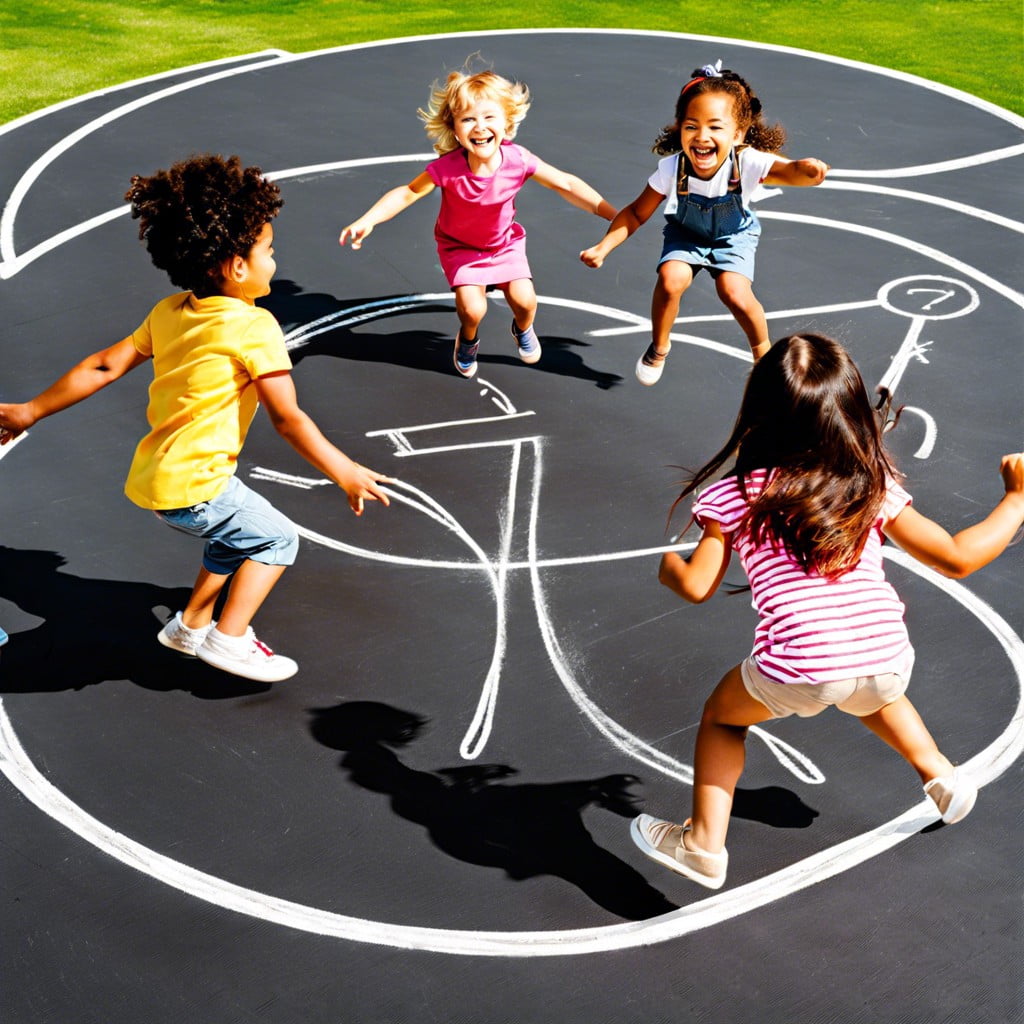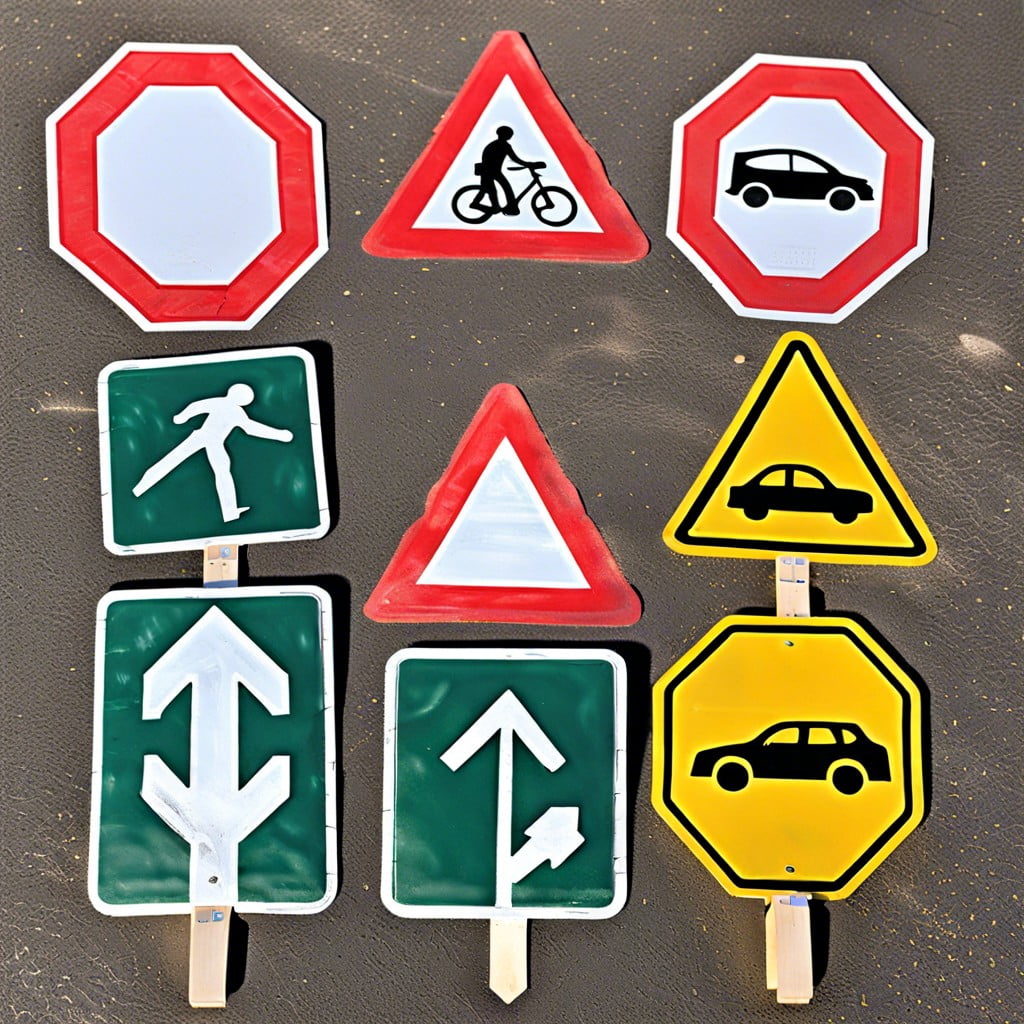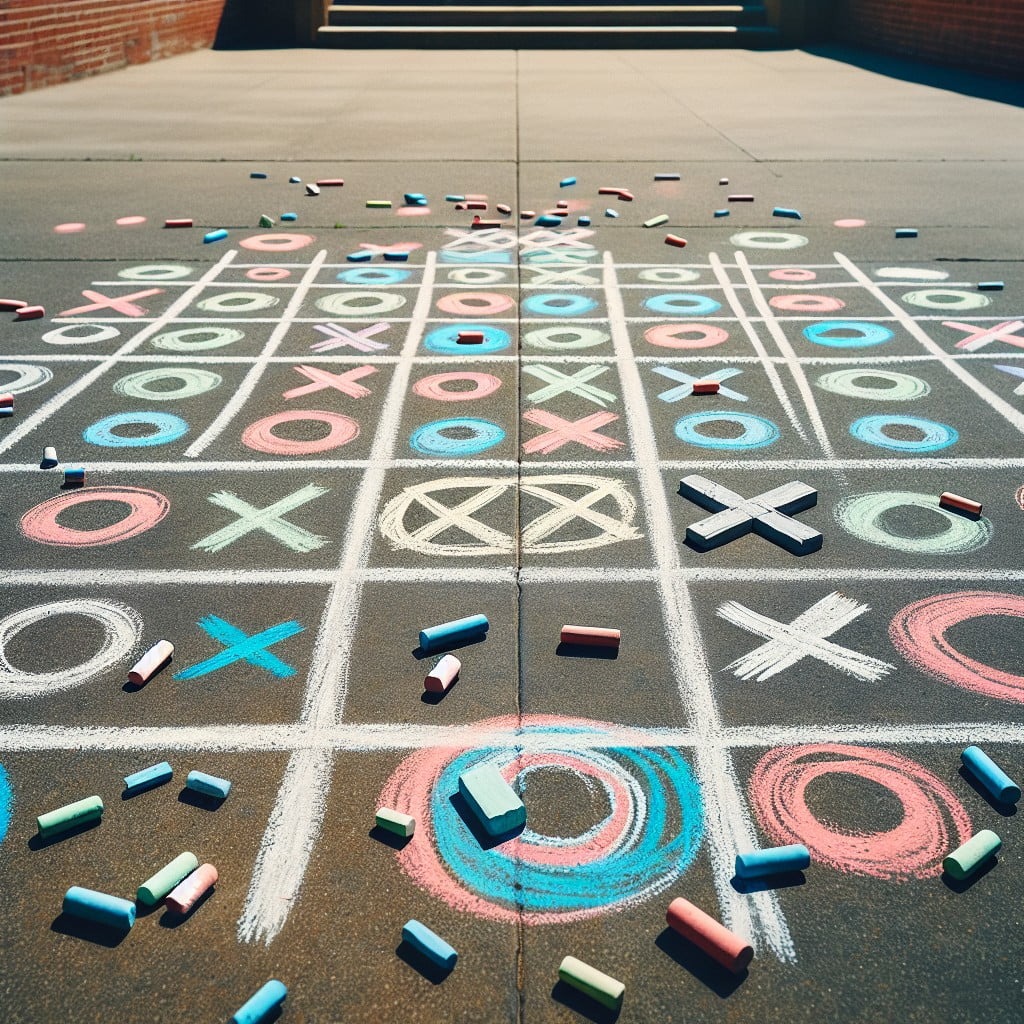Last updated on
Discover a variety of fun and creative chalk activities that are perfect for outdoor play and artistic expression.
Key takeaways:
- Transform hopscotch into a multi-sensory learning game
- Combine scavenger hunt with chalk for outdoor adventure and creativity
- Draw math equations on the sidewalk for a fun and educational challenge
- Design and plan a miniature town to foster creativity and understanding
- Create a giant hundreds chart for hands-on math learning and cooperation
Hopscotch With a Twist
Transform traditional hopscotch into a multi-sensory game by integrating color, shape, and letter recognition into the classic grid.
Replace numbers with a mix of educational cues.
Each square can feature a different color, shape, or letter to prompt learning opportunities during play.
For example, the first square might be red and have the letter ‘A‘, while the second could be circular with the letter ‘B‘.
As children hop, they practice identifying these features, enhancing both physical coordination and cognitive development.
Engage older kids by incorporating math problems or word creation challenges in each box, ensuring the fun scales with age.
Make the game bilingual by including words from a second language, broadening vocabulary as well as cultural appreciation.
This twist on hopscotch is a dynamic way to combine active play with interactive learning.
Creativity Meets Nature Scavenger Hunt
Transform a traditional scavenger hunt into an engaging outdoor adventure by incorporating chalk. Begin by creating a list of natural items for participants to find, such as a leaf with two colors, a smooth rock, or a feather. Each item should be drawn on the sidewalk or driveway with chalk, alongside its written name, to serve as both a visual clue and a literacy element for younger children.
Further elevate the experience by inviting children to draw habitats around the scavenged items with chalk. For example, if a child finds an acorn, they could draw a squirrel next to it, fostering creativity and connections with nature.
Encourage collaboration by forming teams to see which can complete their chalk-based nature gallery first. This activity not only promotes outdoor exploration but also exercises drawing skills, teamwork, and environmental education.
Math Challenge
Encourage critical thinking and numerical skills by drawing equations on the sidewalk. Here’s how to make Math Challenge engaging and educational:
1. Level Progression: Start with simple addition and subtraction for younger children, and graduate to multiplication, division, and algebra for older kids.
2. Interactive Play: Solve problems to move forward, similar to a board game. Each correct answer takes you one square ahead.
3. Speed Rounds: Introduce a timer for added excitement, where each participant has to solve as many problems as they can within a certain timeframe.
4. Teamwork Puzzles: Create larger, more complex problems that require teamwork to solve. This encourages collaboration and group problem-solving techniques.
5. Visual Learning: Make use of diagrams and drawings to solve geometric problems, enhancing visual-spatial reasoning.
6. Real-Life Scenarios: Frame word problems around everyday life to help children see the relevance of math in their day-to-day activities.
Design and Plan a Town
Transform a driveway or a stretch of sidewalk into an urban planner’s canvas, allowing kids to conceptualize and map out their miniature metropolis.
Provide a broad selection of chalk colors to distinguish between different zones such as residential, commercial, and industrial areas.
Encourage the incorporation of essential services like hospitals, schools, and parks, fostering an understanding of city functionality.
Emphasize the importance of roads, traffic lights, and roundabouts to connect the town and teach basic traffic rules.
As children sketch their cityscapes, they exercise spatial awareness and engage in cooperative play, deciding where each building should go and what color represents each structure.
This activity not only sparks creativity but also subtly introduces elements of civil engineering and urban planning.
Create a Giant Hundreds Chart
Drawing a giant hundreds chart on pavement engages children in a hands-on experience with numbers. As they fill in the grid, kids practice number sequencing and recognize patterns in numbers, such as the linear progression of digits and the recurring cycle of tens. This activity also offers an excellent way for children to visualize math concepts like addition, subtraction, skip counting, and even multiplication. They can physically jump from number to number, which reinforces their understanding of how numbers relate to one another spatially and numerically.
Furthermore, by working on a large scale, the game encourages cooperative play and enhances motor skills as children jump or walk across the chart.
Liked reading this? Here’s more:
Recap:



